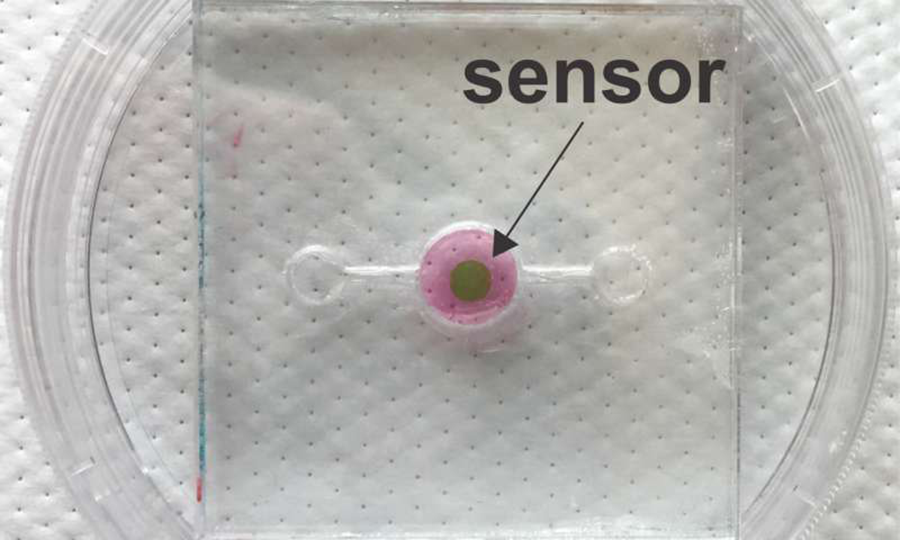A new photonic biosensor allows researchers to track oxygen levels in real time in “organ-on-a-chip” systems to ensure that such systems more closely mimic the function of real organs. This is crucial if organs-on-a-chip hope to achieve their potential in applications such as drug and toxicity testing.
Read more Stretchable Sensors Will Change the Way Sensors Are Integrated Into Wearables
For about a decade, the organ-on-a-chip concept has been receiving a lot of attention from researchers. The idea behind this is to create small-scale, biological structures that mimic a specific organ function, such as transporting oxygen from the air into the bloodstream in the same manner that a lung does. Organs-on-a-chip, also called microphysiological models, will be used to expedite high-throughput testing to evaluate the efficacy of new drugs.
Developed at North Carolina State University and the University of North Carolina, Chapel Hill, the photonic biosensor relies on a phosphorescent gel that emits Infrared Ray (IR) light after being exposed to IR light, similar to an echo. The nifty thing is that how fast the material’s glow activates after being illuminated by light depends on the amount of oxygen in its environment. Simply measuring the response time gives a pretty accurate indication of the oxygen near the sensor, according to a report in MedGadget.
But while organ-on-a-chip research has made significant headway in recent years, one hurdle to the use of these structures is the lack of tools designed to actually retrieve data from the system.
“For the most part, the only existing ways of collecting data on what’s happening in an organ-on-a-chip are to conduct a bioassay, histology, or use some other technique that involves destroying the tissue,” said Michael Daniele, corresponding author on the project and an assistant professor of electrical engineering at North Carolina State University and in the Joint Department of Biomedical Engineering at NC State and the University of North Carolina, Chapel Hill.
“What we really need are tools that provide a means to collect data in real time without affecting the system’s operation,” Daniele says. “That would enable us to collect and analyze data continuously, and offer richer insights into what’s going on. Our new biosensor does exactly that, at least for oxygen levels.”
The biosensor was successfully tested in 3D scaffolds using human breast epithelial cells to model both healthy and cancerous tissue.
“One of our next steps is to incorporate the biosensor into a system that automatically makes adjustments to maintain the desired oxygen concentration in the organ-on-a-chip,” said professor Daniele. “We’re also hoping to work with other tissue engineering researchers and industry. We think our biosensor could be a valuable instrument for helping to advance the development of organs-on-a-chip as viable research tools.”
The study was reported in the journal Biosensors and Bioelectronics.













